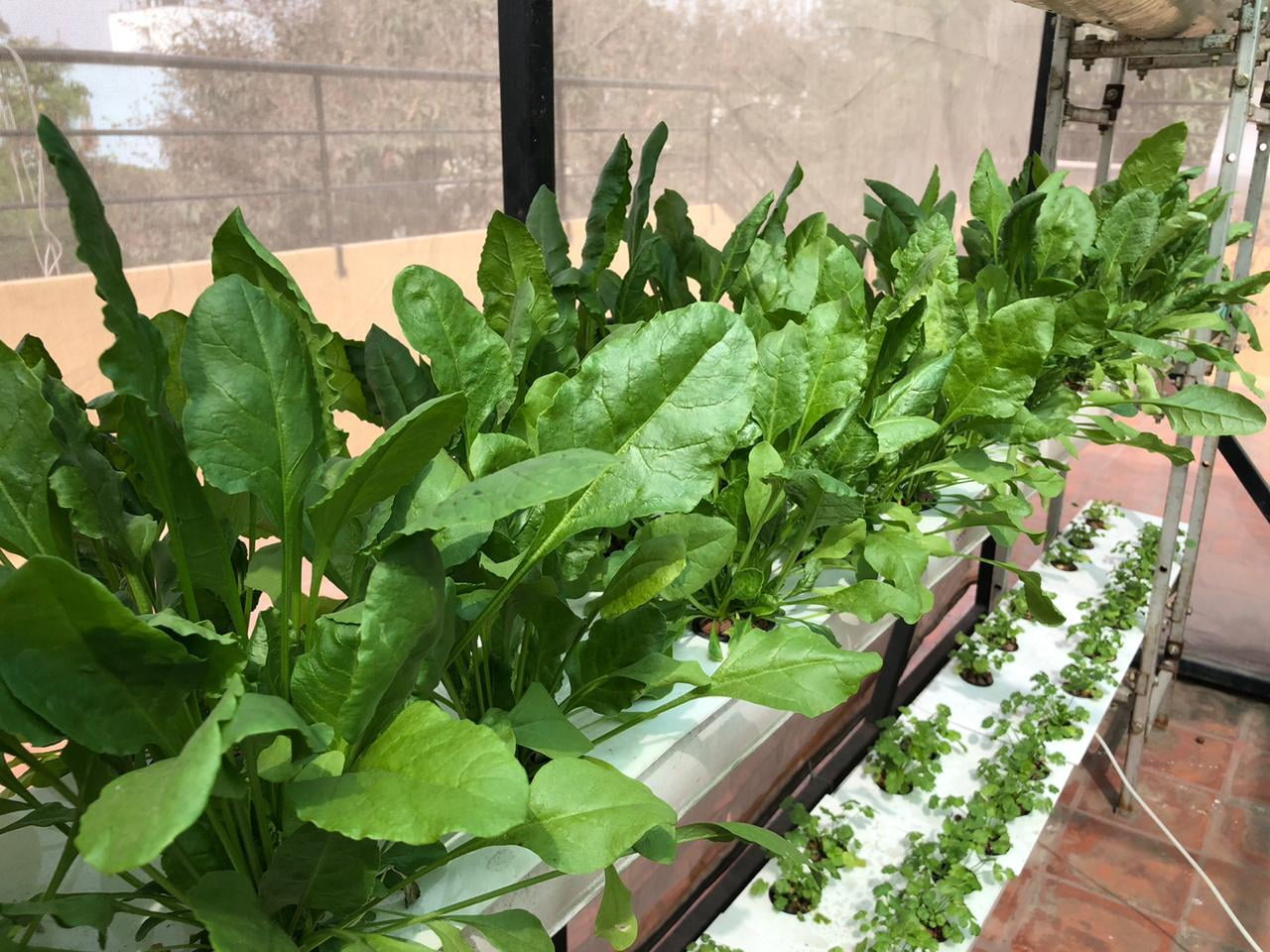In the first of this two-part series on setting up and maintaining a kitchen garden, we covered the costs incurred in setting up a kitchen garden. In this article, we will analyze the cost dynamics of maintaining the kitchen garden and also evaluate the profitability potential of one.
To calculate the profitability potential, we need to understand the revenue and cost dynamics of such a farm. To evaluate either of these figures, the first step is to get a fix on the number and variety of plants inside the terrace farm.

No. of Growing Spots
In our previous post, we had covered the concept of growing area vs. floor area. You would remember that for this specific exercise, we had arrived at a growing area of 98% (approx. 295 Sq. Ft).
In this specific growing area, we can choose to plant a fixed number of crops depending upon the spacing requirements of the particular plant variety. Thus what we need to arrive at is the total number of growing spots for the plants within a given growing area.

Crop Variety
Revenue Estimation
Potential Yield per Crop Cycle:
In the set-up we have created, the ideal spacing for spinach gives us three growing spaces per sq. Ft. of growing area. Thus, the total number of growing spaces for our scenario is 885 (=295x3). Also, each growing space gave an average yield of approx 150 grams. Thus, the potential yield one would get out of 300 sq. Ft. Kitchen garden would be 133 kgs in one crop cycle.
Yield Spacing:
A point to note is that all of this yield will not mature at the same time. Since we are using Vertical rows (to get more growing area), this results in a lesser amount of sunlight being available to the lower rows. So, the plants in the lower racks take longer to be harvest-ready than the plants in the top shelf. This difference in maturity rate is good in a way as it helps in staggering the production and maintaining the demand-supply balance. In our case, the split of 285 sq. Ft of the growing area is 145 sq. Ft in the top layer, and 70 sq. Ft each in the middle and lower racks.
Monthly Yield:
Depending upon the nutrition, temperature, weather, and factors like pH, etc. a particular crop's maturity time may vary and can be controlled to an extent. In the experimental set-up proposed here, we will consider the average maturity times of 4, 5, and 6 weeks respectively, for the three levels of growing areas. Considering a month to be four weeks (for simplicity in calculations), 100% of the plants in the top rack, 80% in the middle frame, and 67% in the bottom one will mature every month. This gives us a monthly yield of approx 111 kg per month.
Revenue Potential:
Since the produce grown in your kitchen garden will be super fresh, crisp, soil-free, and free of pesticides, it should command a premium over the one sold by your neighborhood vegetable vendor. Still, without being too ambitious, we will take a price of 25/- per bunch (of 200 gm).
At this price, the monthly revenue potential is at 13,875/-
Cost Estimation
The monthly input costs would be at 7,500/-
Profitability Potential
Using the above calculations, the profitability potential from such a venture stands at 6,375/- per month for a 300 sq. Ft set-up. This figure indicates a time-frame of approx. 14 to 15 months to recover the Investments.
Points to Note: Couple of critical observations/suggestions
1. Don't set-up a kitchen garden, if profit is the sole objective.
You may argue that 6.3k is a tiny amount for one to go after this business. You will be right. Rooftops are small spaces. The relative capital cost will be high as the benefits of amortization will not kick in for small areas. Also, you would notice that the rental towards land is assumed zero here (the Kitchen Garden is set-up on empty/unused space). Again, the cost of labor is also kept at zero. If you add these two costs, the profit will be meagre.
If you do plan to set-up a kitchen garden, go for the right reason. May it be to give healthy and fresh food to your family or to have a hobby or vocation or anything else that attracts you to the greens. Any profit that you generate out of it; take it as an added incentive that helps you to become self-reliant and self-dependent in financial matters (to a limited extent only).
2. Don't extrapolate terrace garden figures to a commercial farm.
The input costs and running costs in a Commercial farm will be much more and different from a rooftop garden. There would be added charges towards automation, rentals, and labor. Plus, there would be further costs towards marketing the produce, setting up a sales and distribution channel, etc. And after all of that, one may not be able to command a premium price if selling in bulk (to say a wholesaler who will need to add her margin before selling to a retailer, who will add her margin before selling to end-consumer). Take all of those costs into account while thinking of a commercial farm.
A word of caution
Parting note
Happy Farming!